Resources
Frequently Asked Questions
RESCOBOND AA-22S
-
Do Rescobond AA-22S linings need to be dried after air setting to resist shipping damage?
-
Will undried Rescobond AA-22S absorb moisture from the air like plastics do?
-
Will freeze/thaw cycles affect unheated Rescobond AA-22S installations?
-
Must the undried Rescobond AA-22S linings be kept dry after air setting?
-
Must the Rescobond AA-22S lining be dried if it is going to be stored before use?
-
Is unheated Rescobond AA-22S affected by steam which is sometimes used as part of the start-up process?
-
An installation is going to be hydrostatically tested. What precautions must be taken with Rescobond AA-22S?
CASTABLE
MONOLITHICS
What are the best practices to store monolithic products?
Refractory monolithics (dry castables and gun mixes, basic castables and gun mixes, plastics, wet and dry mortars, liquid seals, precast shapes) should be stored in a dry, covered, weather-protected location, such as a permanent warehouse, and placed on a concrete slab, asphalt pad, or other impermeable surfaces. The product should be stored on the original pallets (with stretch wrap or original packaging intact, when applicable) but elevated from the surface to allow air circulation. Care should be taken to avoid high humidity locations where moisture can collect under the plastic pallet wrapping.
Castable refractories should NOT be stored on grass, soil, or other non-compacted surface or any area where moisture can collect, stand, or come in contact with the refractory or refractory packaging.
Refractory bags or containers showing evidence of damage, or being previously opened, should not be used and should be discarded. Bags containing dry refractory that is agglomerated, containing hard lumps, or have evidence of water stains should not be used and should be discarded. Hard lumps indicate that the dry refractory has come into contact and reacted with water.
Ideal air and material temperature range during storage is 50°F (10°C) to 80°F (27°C) for all refractory monolithic products.
Dry monolithic products should be stored in unopened bags or containers and on the original shipping pallets. Bags or containers showing evidence of damage or being previously opened should NOT be used and should be discarded. Bags containing dry refractory that is agglomerated, containing hard lumps, or that have evidence of water stains should NOT be used and should be discarded. Hard lumps in the bag indicate that the dry monolithic refractory has come into contact with moisture.

Leave a comment